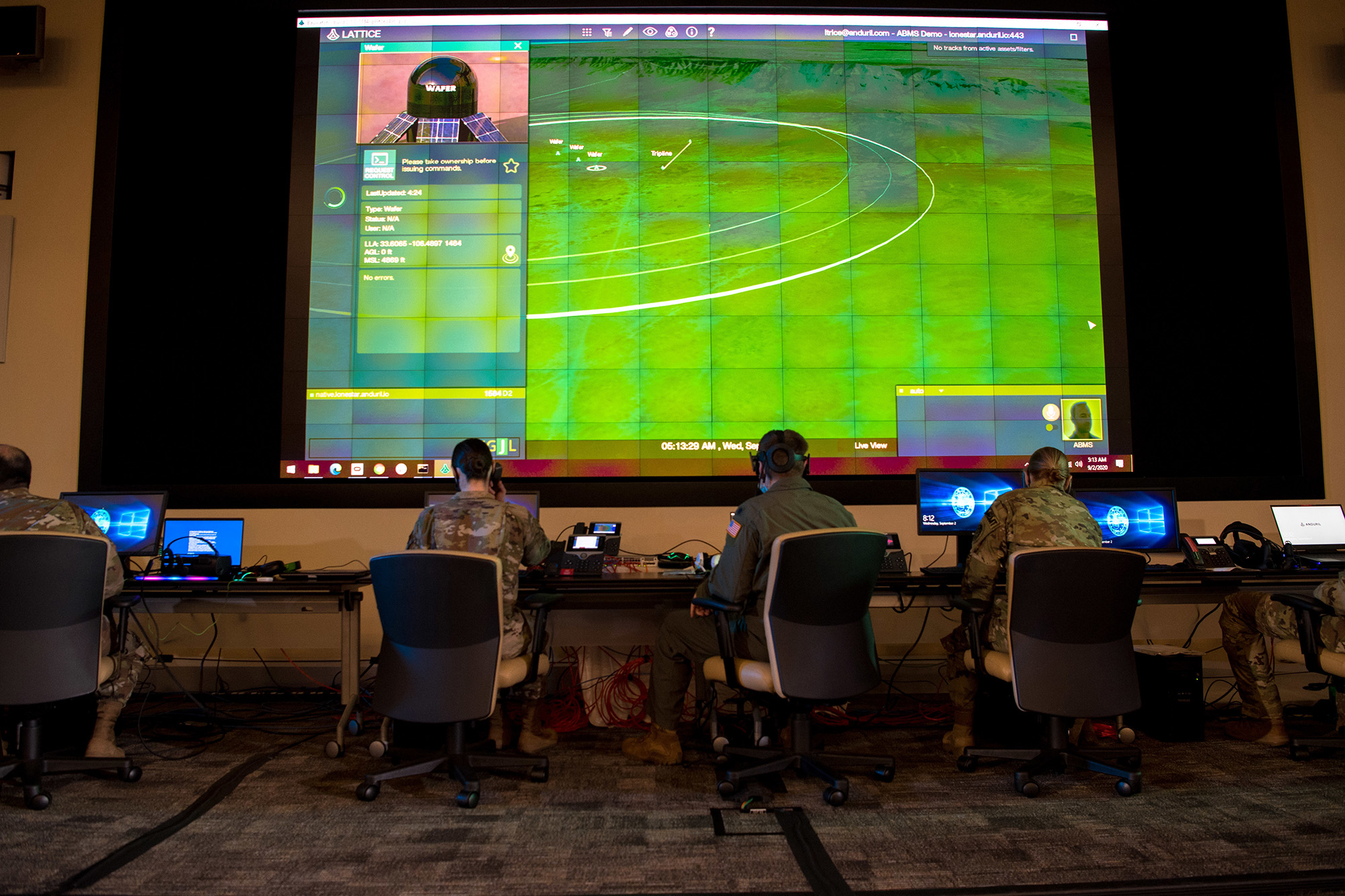The Air Force chose Leidos, the defense IT giant, to help oversee the digital infrastructure for its Advanced Battle Management System—the department’s key contribution to the Pentagon’s Joint All-Domain Command and Control initiative.
Under a new $303 million contract announced Oct. 7, Leidos is tasked with “planning, analysis, and operations” for ABMS’ digital infrastructure, intended to connect sensors to battle managers and shooters around the globe.
“As previously realized, the data was pretty much locked into different capabilities or different tools or different platforms that the Department of the Air Force operates,” said Chad Haferbier, division manager for multi-domain solutions at Leidos, in an interview with Air & Space Forces Magazine. “The idea … is to expose that data for better proliferation, sharing, better decision advantage and ingest [it] through that new ecosystem that they’re looking to field.”
The Air Force, under command, control, and communication/battle management czar Maj. Gen. Luke C.G. Cropsey, is developing an information architecture and Leidos will “support them in the proliferation of what the network looks like, and to manage it and to sustain it and keep it cyber-secure and keep it operational.”
To make that happen will require a combination of hardware and software, Haferbier added—everything from digital clouds to fiberoptic cables to servers to computer programs to handle the flow of data.
“We’ll have modern platforms, we have legacy platforms, that’ll never change,” Haferbier said. “So how do we field a more flexible compute ecosystem and networking ecosystem to move the data around and amalgamate and share?”
Cropsey and his team have been considering how to solve the nitty-gritty problems of a better network for some time now.
“Regardless of where you’re going to fight, what you want to communicate, the data and the information that you need to flow through that system, if you don’t have a digital infrastructure to do it on, it’s a pipe dream,” Cropsey said last year, pledging that his office would start fielding that infrastructure within the year.
Many details about the architecture for ABMS and the Department of the Air Force’s larger planned DAF Battle Network remain classified. But officials want an open architectures that enables different contractors and agencies to easily share data with the larger ecosystem.
The Air Force has created vendor pools empowering dozens of companies to contribute to ABMS, and Haferbier said Leidos will work with the entire industry to integrate those varied solutions into the network. ABMS will not be delivered as a fully formed capability, but instead will follow an iterative approach, adding pieces over time.
“I think the Air Force is making smart decisions about tackling one level of the [tech] stack here with the network, tackling the compute level of the stack and not trying to field a JADC2 box that will solve everything,” said Haferbier.
Cropsey is eager to get beyond tests, experiments, and demonstrations, and Haferbier said Leidos intends to progress quickly toward fielding some initial digital infrastructure.
“I hope to see real progress in the next 12 months for sure,” he said. “The true details of deliveries are going to be at a classified level, but I know that we have a three-year base period and two option years after that for this contract, so I’m fully committed to providing the talent and the expertise and the manpower to help the Air Force realize its vision as rapidly as possible.”

